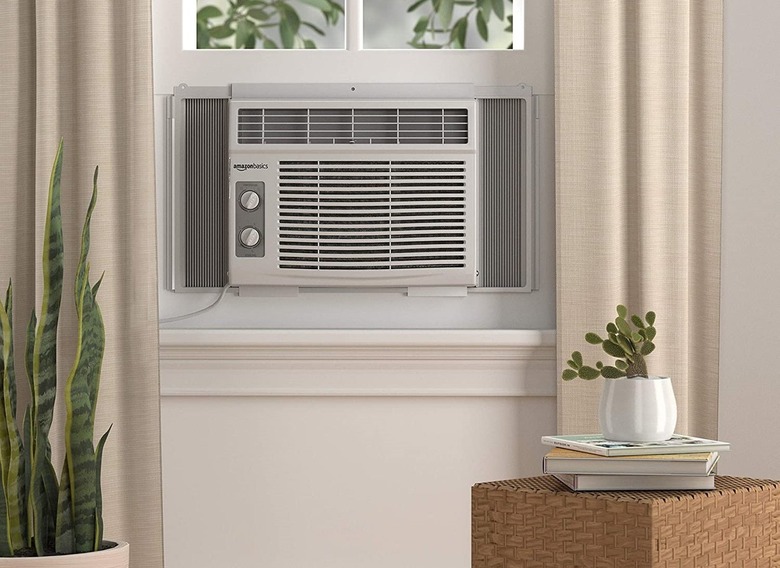Current Draw Of Air Conditioners
We may receive a commission on purchases made from links.
When calculating your expected energy costs, you absolutely need to know how much current your air conditioner draws. The air conditioner itself usually bears a sticker that will give you this information, but pulling portable units in and out of windows over the years can make these stickers illegible. Fortunately, there are ways to calculate the current draw so you don't have to guess.
What Is Current Draw?
What Is Current Draw?
In order to understand how much current your air conditioner needs, it's important to understand a few basic electrical terms. Current draw refers to the number of amps that your air conditioner needs to function properly. Amps, sort for amperes, denotes the amount of electricity that flows through a certain point in a specific amount of time.
Unlike amperage, voltage looks at the entire electrical circuit as a whole. It measures the amount of electricity between two different points in an electrical circuit. A standard household electrical outlet puts out 120 volts. Voltage essentially measures the amount of electrical power available.
Wattage measures how much energy an appliance uses to convert electricity into a different type of energy. Your toaster, for instance, turns the electric energy to heat energy and toasts your bread. Put simply, wattage is the amount of power an appliance needs to operate.
Even though water and electricity don't mix, it's helpful to compare your electrical system to your plumbing. In that case, voltage refers to the amount of water pressure in the plumbing system. The amperage is the flow rate of that water as it travels through the pipes.
Doing the Math
Doing the Math
Because voltage, amperage, and wattage are all interconnected, you can use simple math to determine any numbers you lack. As you now know, the current draw of your air conditioner refers to how many amps it uses. To figure this out, remember these formulas:
Amperage (current draw) * Voltage = Wattage
Watts / Volts = Amperage (current draw)
Current Draw of Air Conditioners
Current Draw of Air Conditioners
The current draw of an air conditioner depends on its size and cooling capacity. This is measured in BTUs, which is short for British thermal units. The more BTUs your air conditioner produces, the more power it will draw. A small window unit rated at 5,000 BTUs has a current draw of about 4 to 6 amps. A larger 12,000 BTU unit draws between 9 and 13 amps.
Central air conditioning requires between 208 and 240 volts to operate and draws between 15 and 60 amps depending on the size. Given their large current draw and high voltage requirements, central air conditioners need to be hardwired into your home. You can't just plug these in as you do window and portable units.
Note That Size Matters
Note That Size Matters
If you're researching the current draw of air conditioners, you're probably looking for ways to reduce your energy bill. One way to do so is to properly size your air conditioning unit. Don't assume that more power equals more cooling or energy savings.
If you get an air conditioner that's too big for your space, you're drawing more current than what is necessary to cool the area. This translates into spending more money than you have to when the electric bill comes. Not only will it cost more but you'll benefit less. Oversized units may not run long enough to remove all the humidity in the air.
Don't go too small either. An undersized air conditioner will fall behind and will need to run almost continuously to cool your home. This excessive running increases the current draw and your electric bill. To be as energy efficient as possible, shop for air conditioners like Goldilocks — keep searching until you find one that's just right.
References
- Larson Electronics: How to Calculate Amperage When Planning a Lighting Installation Project
- 12 Volt Planet: Electrical Circuit Basics
- Learn Metrics: How Many Amps Does a 5,000-18,000 BTU Conditioner Use?
- Total Home Supply: Air Conditioners Voltage & AMPs
- Senica Air Conditioning: How Many Watts Does an Air Conditioner Use?
